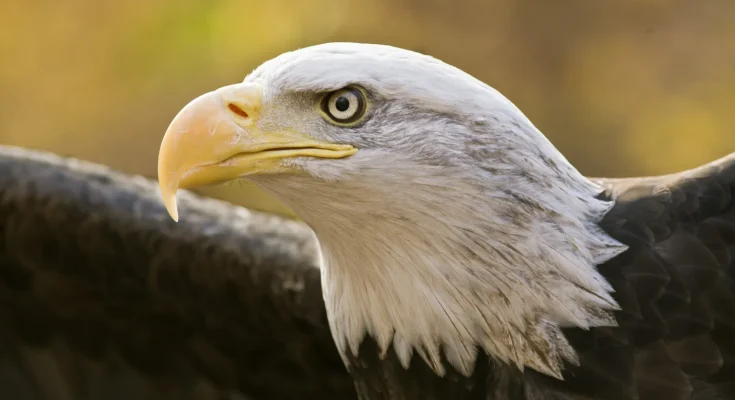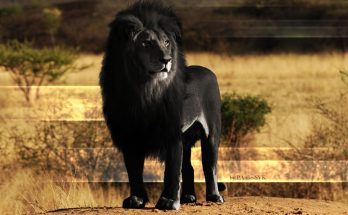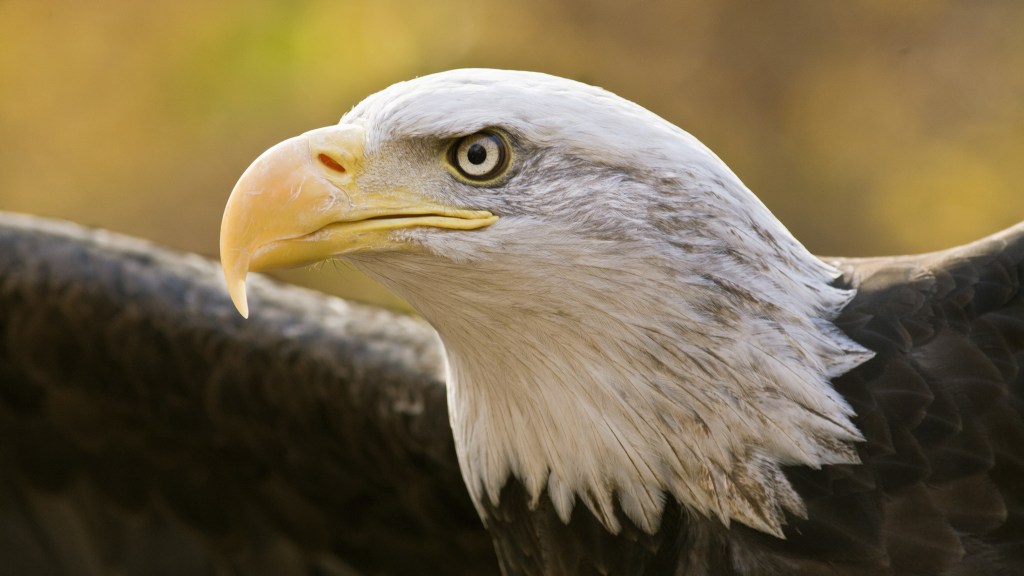
With summer upon us, it’s time to go looking for America’s iconic wildlife.
I’ve focused on the critters that people love to look for in our national parks. The creatures that adorn t-shirts and make popular toys. Some have patriotic connotations and some are emblematic conservation successes.
There are many critters that could qualify, of course. Here are my 10 picks as well as great places to see them. What animals did I miss? Where are your favorite places to wildlife watch? Leave them in the comments.
-
Bald Eagle

An adult bald eagle. Photo © Doug Brown / Flickr through a Creative Commons license. You knew this one was on the list. Our national bird will be difficult to miss this weekend – or at least images of it. But the bald eagle is more than a national symbol; it’s also a symbol of conservation success. Numbers have been roaring back after being severely depleted by hunting and DDT.
So don’t be content with a bald eagle poster this weekend: go find a wild one. There’s probably one near you.
Where to See: With bald eagles thriving, there are more places than ever to see them; just be sure to stay far away from nesting birds. For lots of eagles, head to Haines, Alaska: more than 3,500 congregate there between September and December. My favorite eagle watching spot? Head to the bluffs around Effigy Mounds National Monument in northeast Iowa, where you can watch bald eagles soar above another American icon at its most scenic: the mighty Mississippi River.
-
Bison
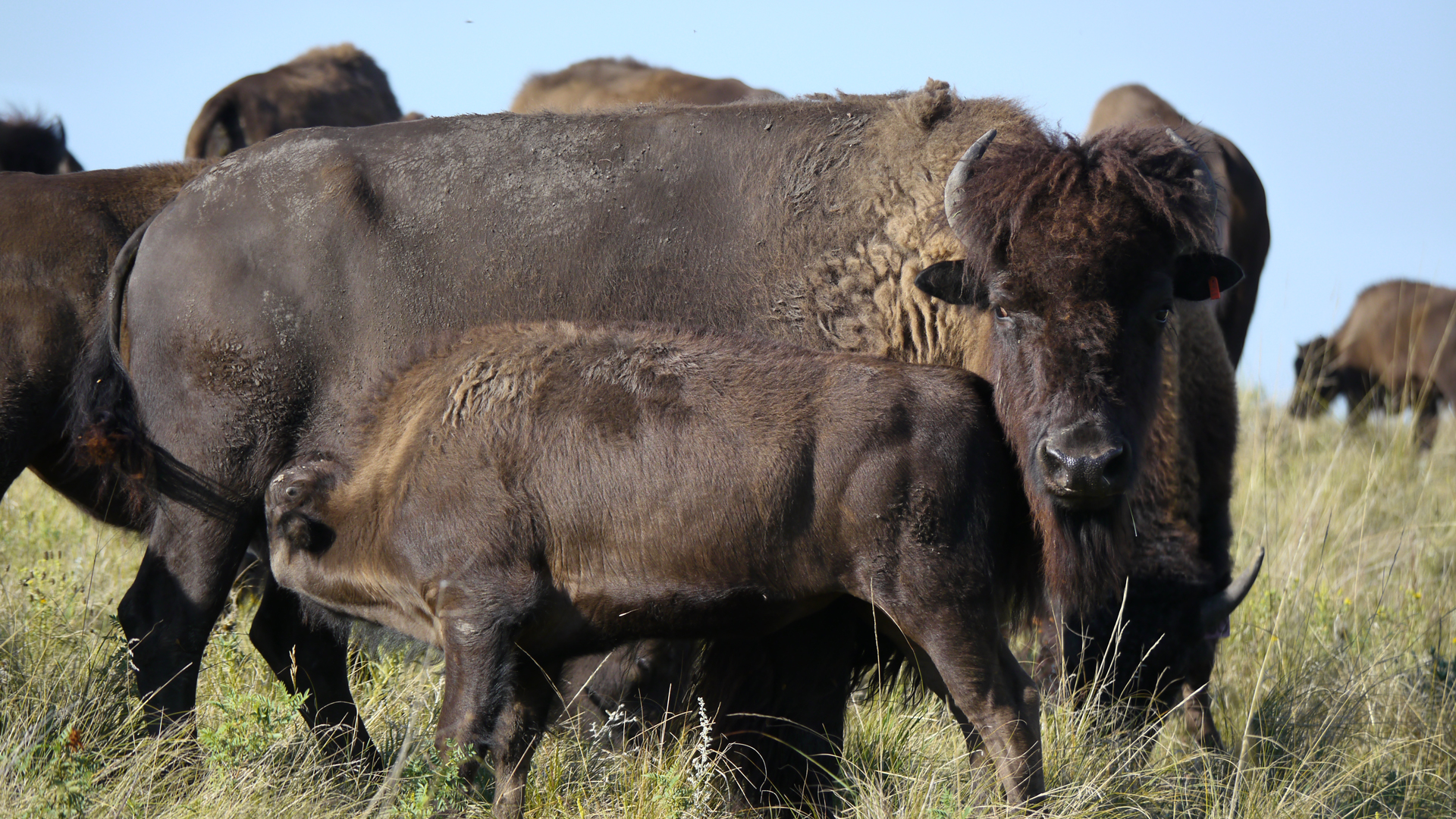
Bison herd. Photo: Matt Miller/TNC The icon we almost lost. Seeing a herd of the shaggy beasts fills me with both melancholy – I can imagine what those great herds must have looked like on the Great Plains – and hope – because bison are still among us.
And spreading. Conservation efforts are returning bison to native habitats where they haven’t roamed in a century or more, like the Conservancy’s Nachusa Grasslands in Illinois.
Where to See: Yellowstone National Park, where bison were essentially saved, remains the classic pick. Wind Cave National Park in South Dakota has served as reservoir for genetically pure bison (many others carry cattle genes). A spectacular place to see the great herds on beautiful prairie is at the Conservancy’s Tallgrass Prairie Preserve near Pawhuska, Oklahoma.
-
Gray Wolf
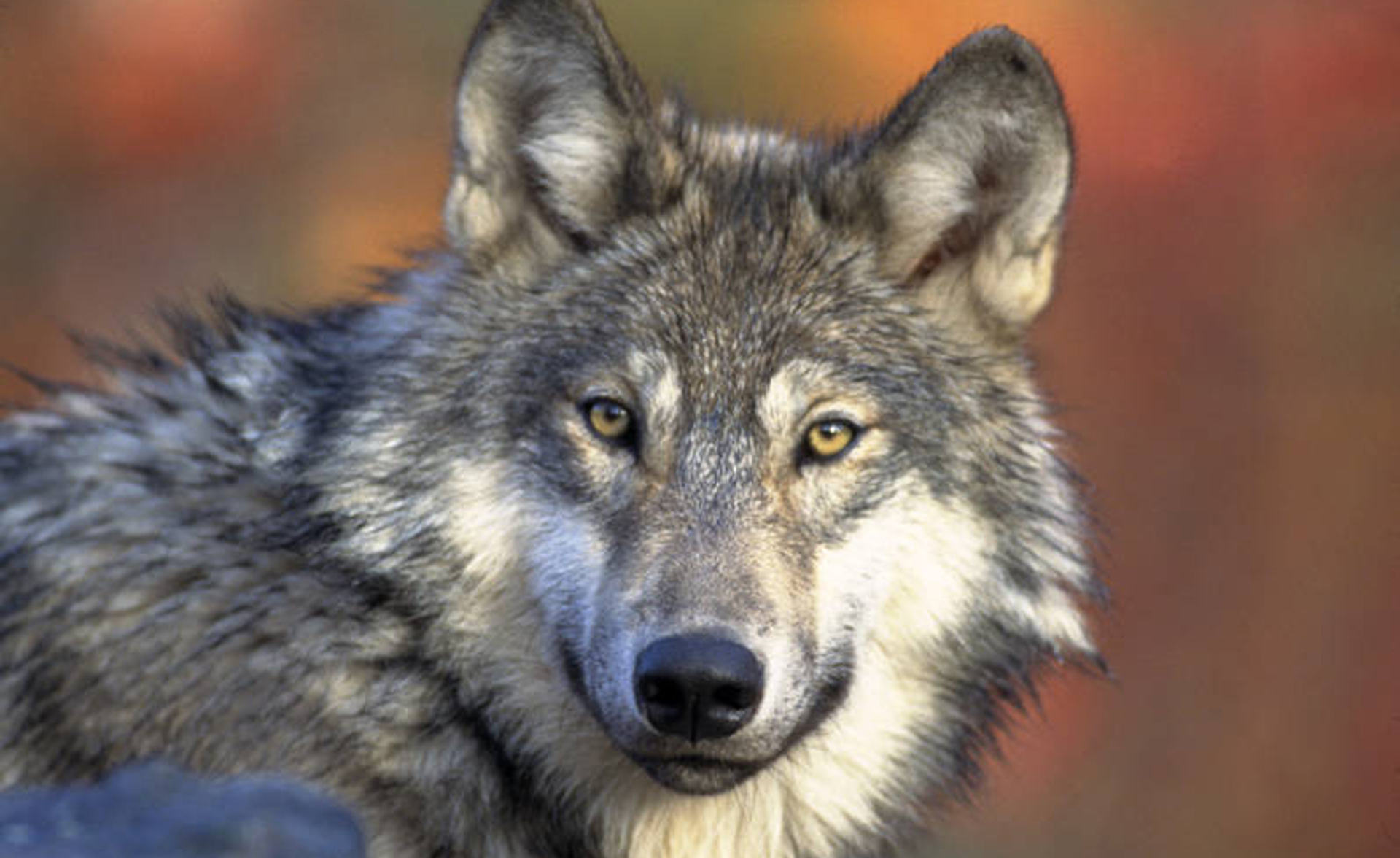
Photo: Gary Kramer/ U.S. Fish and Wildlife Service Is there an animal that inspires more strong opinions and controversy than the gray wolf? There may also be no animal that appears on so many patriotic t-shirts and artwork. Nor one that has such a dramatic (and positive) effect on ecosystems, as the reintroduction of wolves to Yellowstone and elsewhere has borne out.
Where to See: This one is easy. Go to the Lamar Valley of Yellowstone. Here you can see the wolf interacting with the herds of elk and bison, as well as grizzly bears, coyotes and badgers. America’s Serengeti became more complete and healthy with the return of the wolves in 1995.
-
Moose

Photo: © Tina McCoy The largest of the deer family, moose are in decline in many places due to tick infestations, which in turn are exacerbated by climate change. But there are still plenty of first-class moose viewing opportunities around the country.
Where to See: I’ve seen a lot of moose, but my first encounter remains the most memorable: big bull moose feeding in lakes at Maine’s Baxter State Park. When they lifted their heads, water cascaded through their massive antlers.
You can have the unusual experience of seeing moose in the high desert at the Nature Conservancy’s Silver Creek Preserve in Idaho, or on the slopes of ski resorts at Snowbird in Utah. And Alaska remains the undisputed moose capital, with a population of 175,000 animals.
-
Mountain Goat
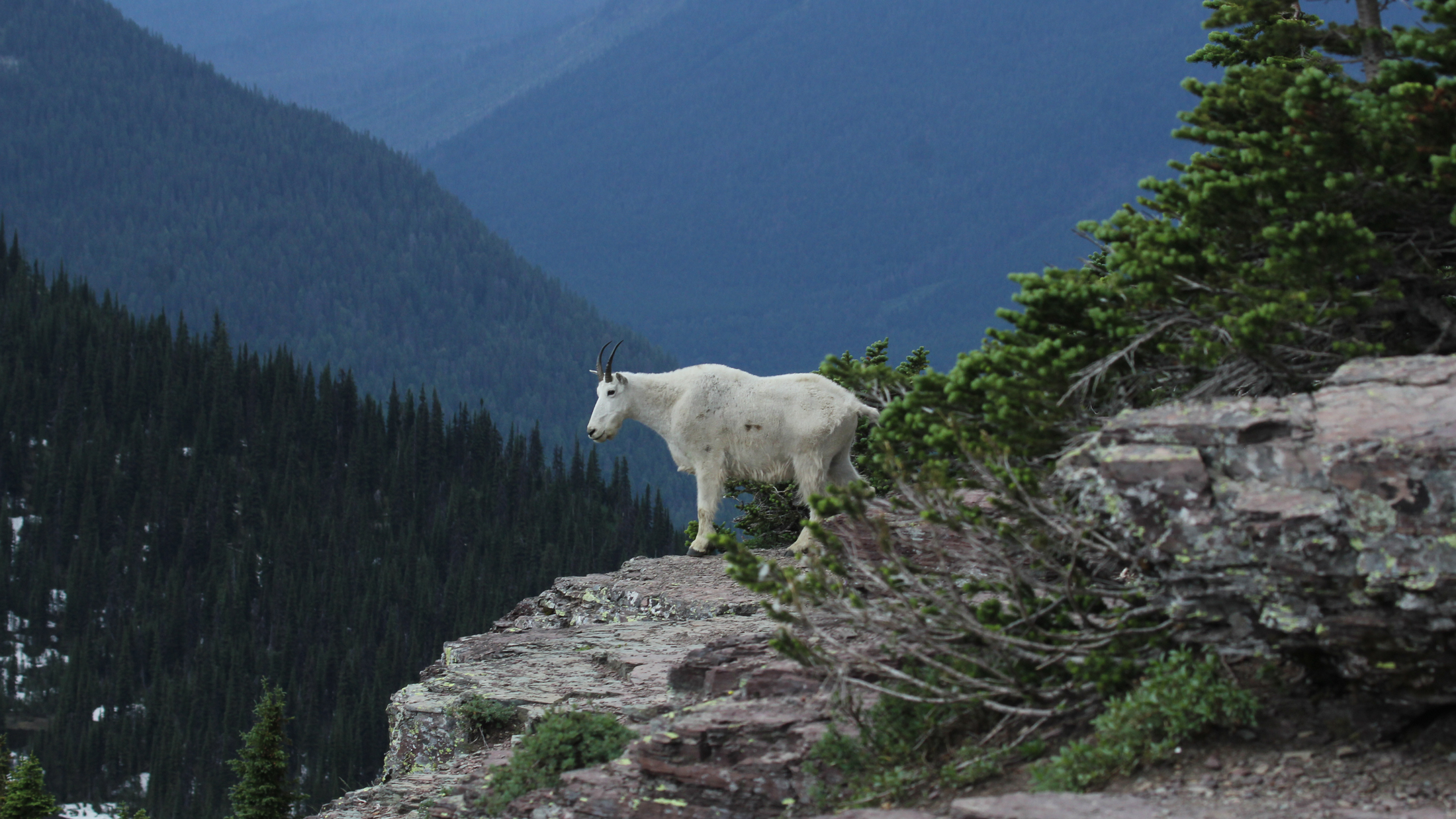
Photo: Matt Miller/TNC For mountain monarchs, some might prefer the bighorn sheep. But the mountain goat is the only member of its genus, and that genus is found only in North America. To me, no animal better typifies the spectacular mountain ranges of the West.
Where to See: Glacier National Park offers jaw-dropping scenery, with lots of mountain goats scampering around it. The Logan Pass area and trails are particularly good (and you can see bighorn sheep, hoary marmots and other cool critters as well).
For a patriotic location, you can see them up close around Mount Rushmore – but this is a non-native population.
-
Pronghorn
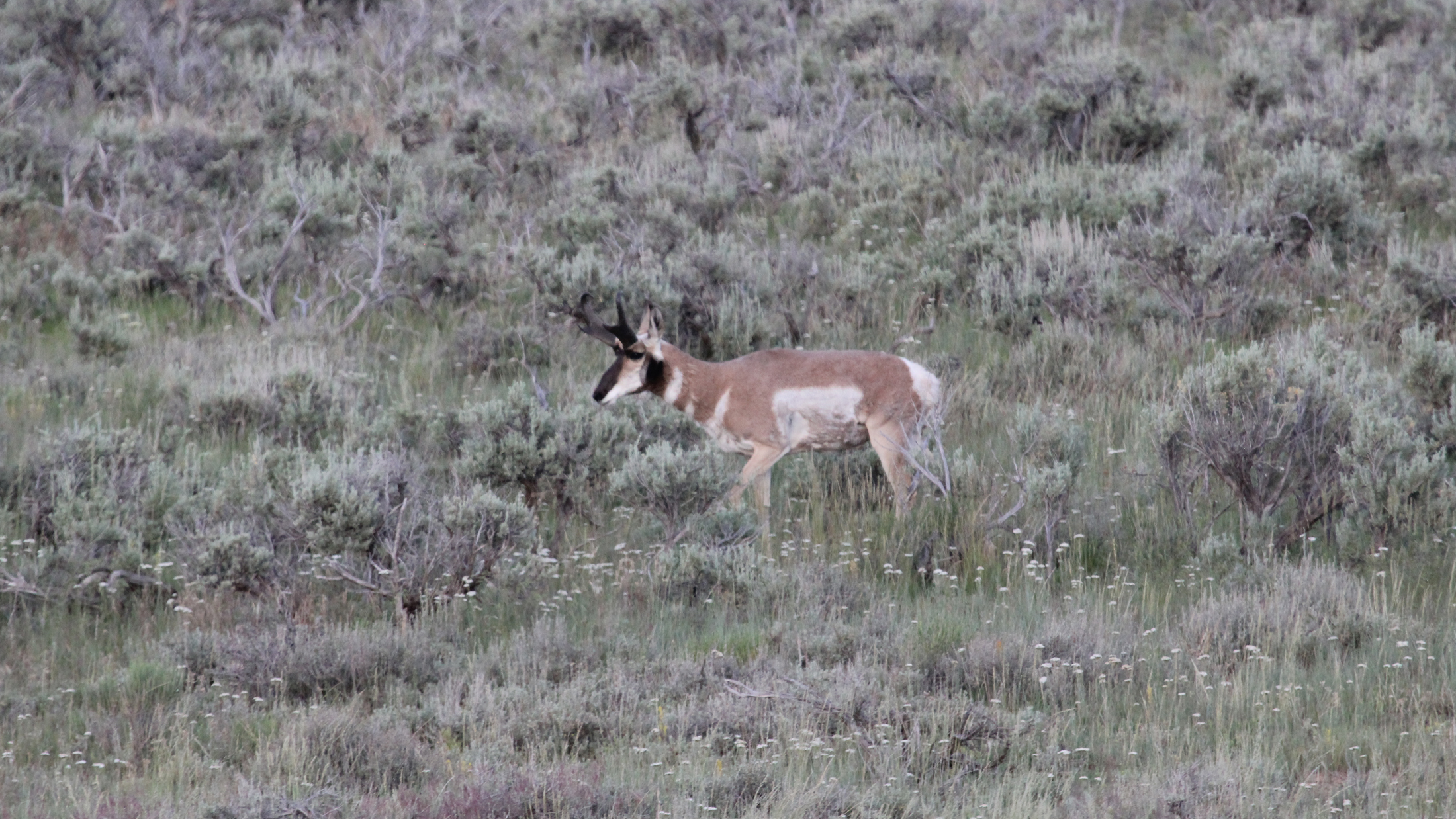
Pronghorn. Photo: Matt Miller/TNC Another American original, the pronghorn is one of the few beasts remaining from North America’s original (and spectacular) Pleistocene fauna. It evolved to outrun cheetahs and long-legged hyenas. They’re long gone, but the pronghorn’s still running.
Its populations have rebounded from 1800s market hunting but the animals now face increasing threats as its long migration corridors are cut off by housing developments and energy development.
Where to See: More than 500,000 pronghorn live in Wyoming. The best bet? Get off the interstate and explore the back roads of sagebrush country. You really can’t go wrong. The appropriately named Hart Mountain National Antelope Refuge in eastern Oregon is another place to experience the wonders of sagebrush-steppe habitat.
-
Black Bear
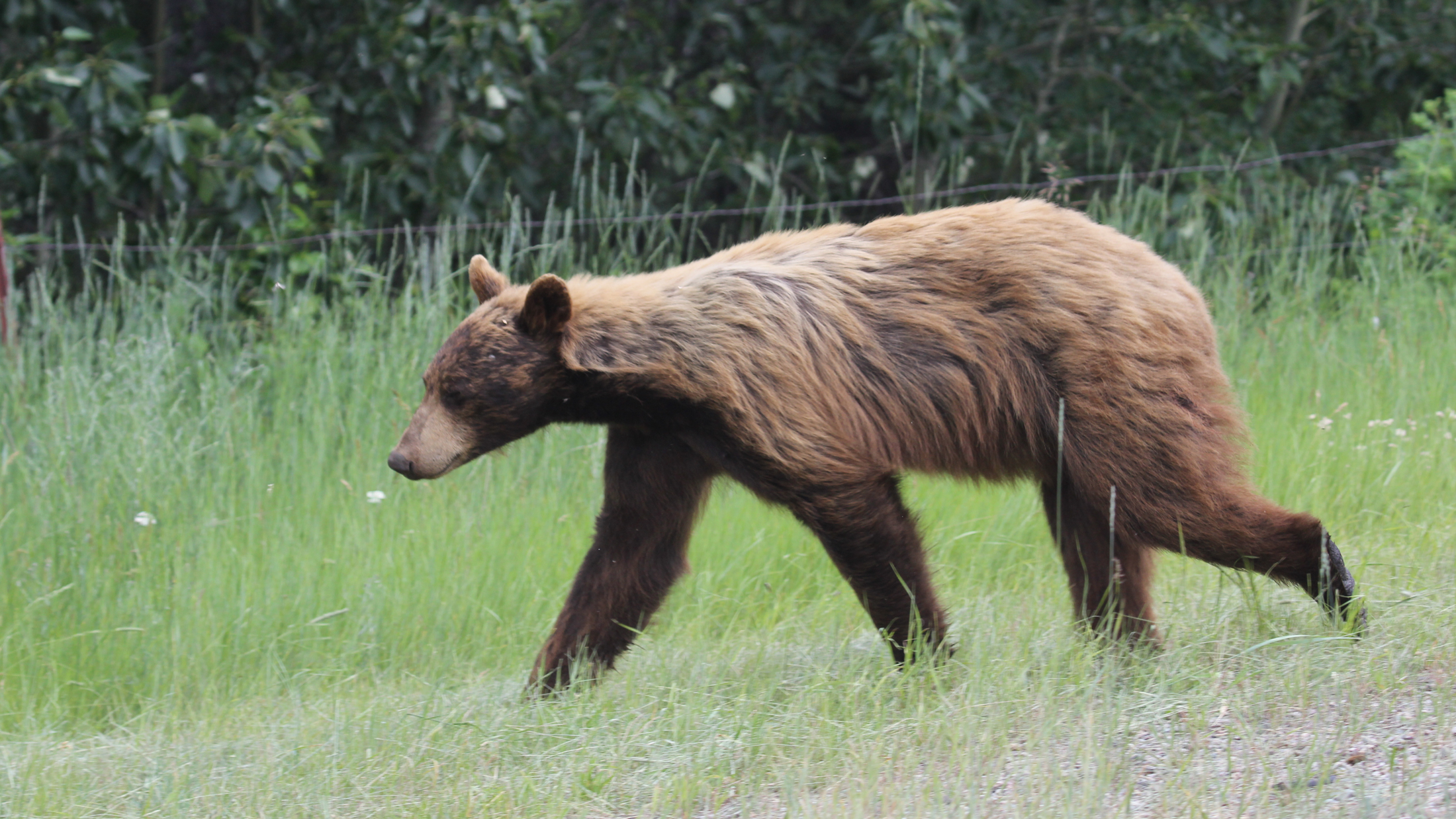
Photo: Matt Miller/TNC Yeah, the grizzly bear may figure more prominently in history and lore, but the black bear is found more widely. Arguably more than any other bear in the world, black bears have adapted quite well to the trappings of humanity. A Pennsylvania woodlot or New England suburb will do nicely, thank you very much.
Where to See: Just because a black bear lives in your neighborhood doesn’t mean you’ll see it. They haven’t survived by being visible. The Great Smoky National Park has a reputation as one of the best spots in the East, but I didn’t have much luck on my recent trip there. State parks in forested areas of Pennsylvania, like Black Moshannon and Poe Paddy, are worth checking out. In the West, Yellowstone and Glacier are, again, hard to beat . And you have a good chance of seeing grizzlies, too.
-
Alligator
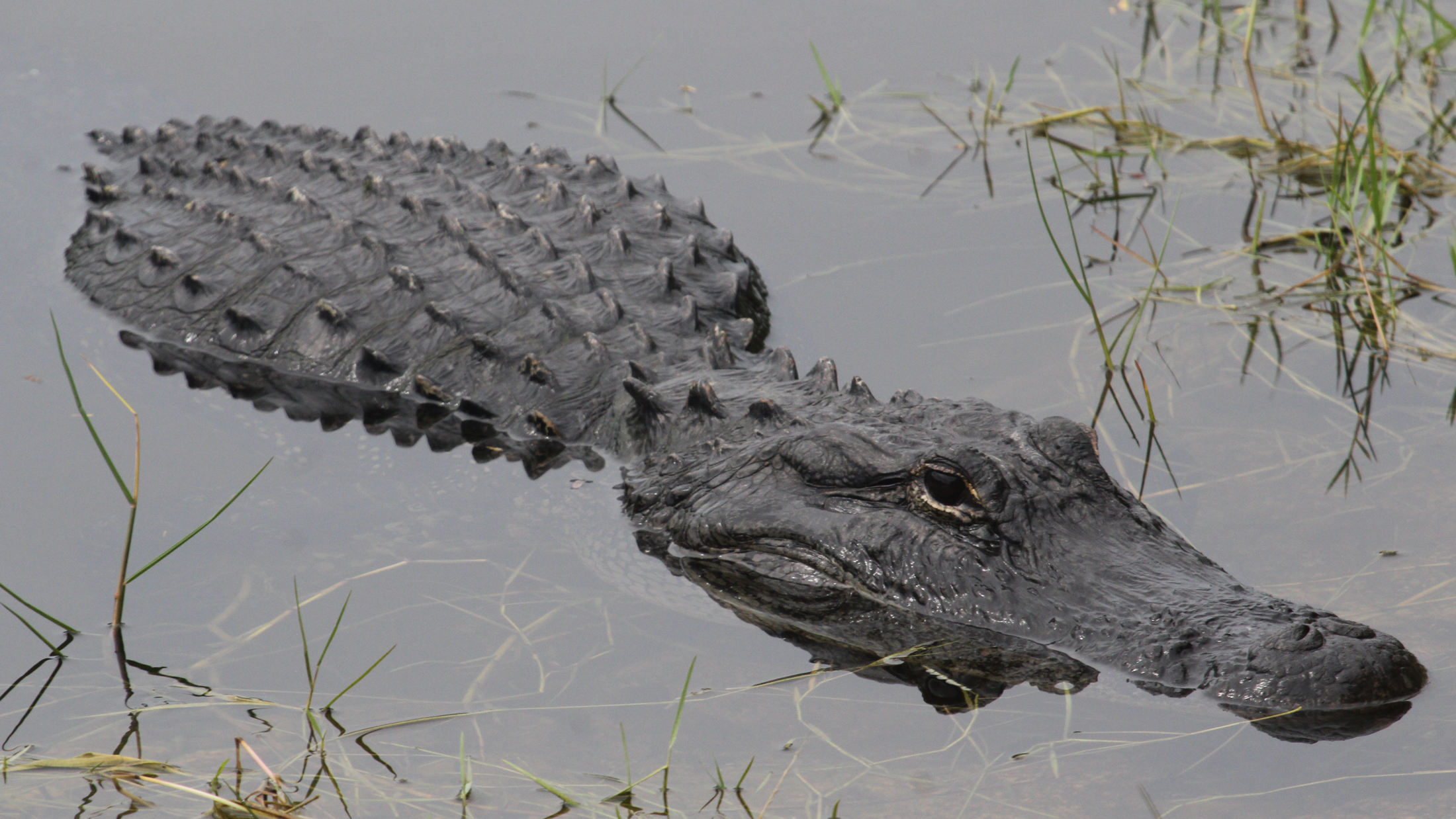
Photo: Matt Miller/TNC Another roaring conservation success: when I was a kid, my animal books spoke of alligators with the same gloomy pessimism as we now associate with rhinos. A regulated harvest and better protection has allowed the gator to roar – literally – back in splendid fashion.
Where to See: The Everglades is alligator central. If you’re fishing, they’ll find you. Seriously.
The Shark Valley area and all along the Tamiami Trail are prime gator-viewing locations.
The boardwalk at the Big Cypress National Preserve Visitor Center along the Tamiami Trail offers perfect photographic opportunities. As a bonus, you can easily see Florida softshell turtles and schools of Florida gar. It doesn’t get much cooler than that. Well, at least for me.
-
Wild Turkey
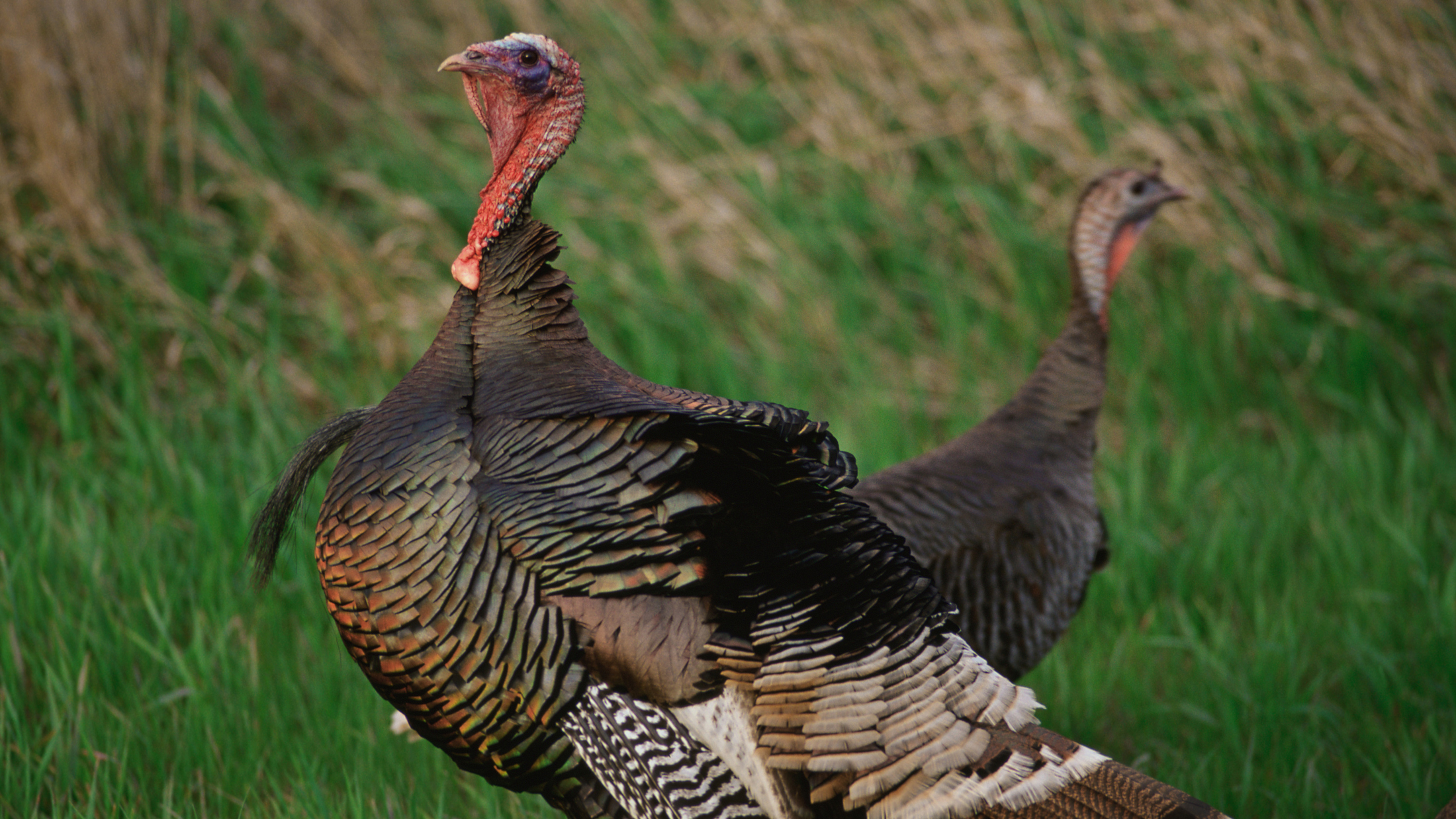
Photo: © Mark Godfrey Legend has it the wild turkey was almost our national bird. Whatever the truth of that, it’s no doubt the turkey looms large in our history and traditions. And like so many other critters on this list, it once found itself in hot water.
The recovery of the turkey may be the most dramatic conservation turnaround of all. The effort, some might argue, was even too successful. But abundance shouldn’t diminish wonder. Turkeys are wonderful birds to watch, especially when the males are strutting and gobbling in the spring.
Where to See: There are so many good locations, but turkeys are incredibly wary. Good photographic locations include the lands around Kentucky’s Mammoth Cave National Park and North Dakota’s Theodore Roosevelt National Park.
-
Northern Cardinal
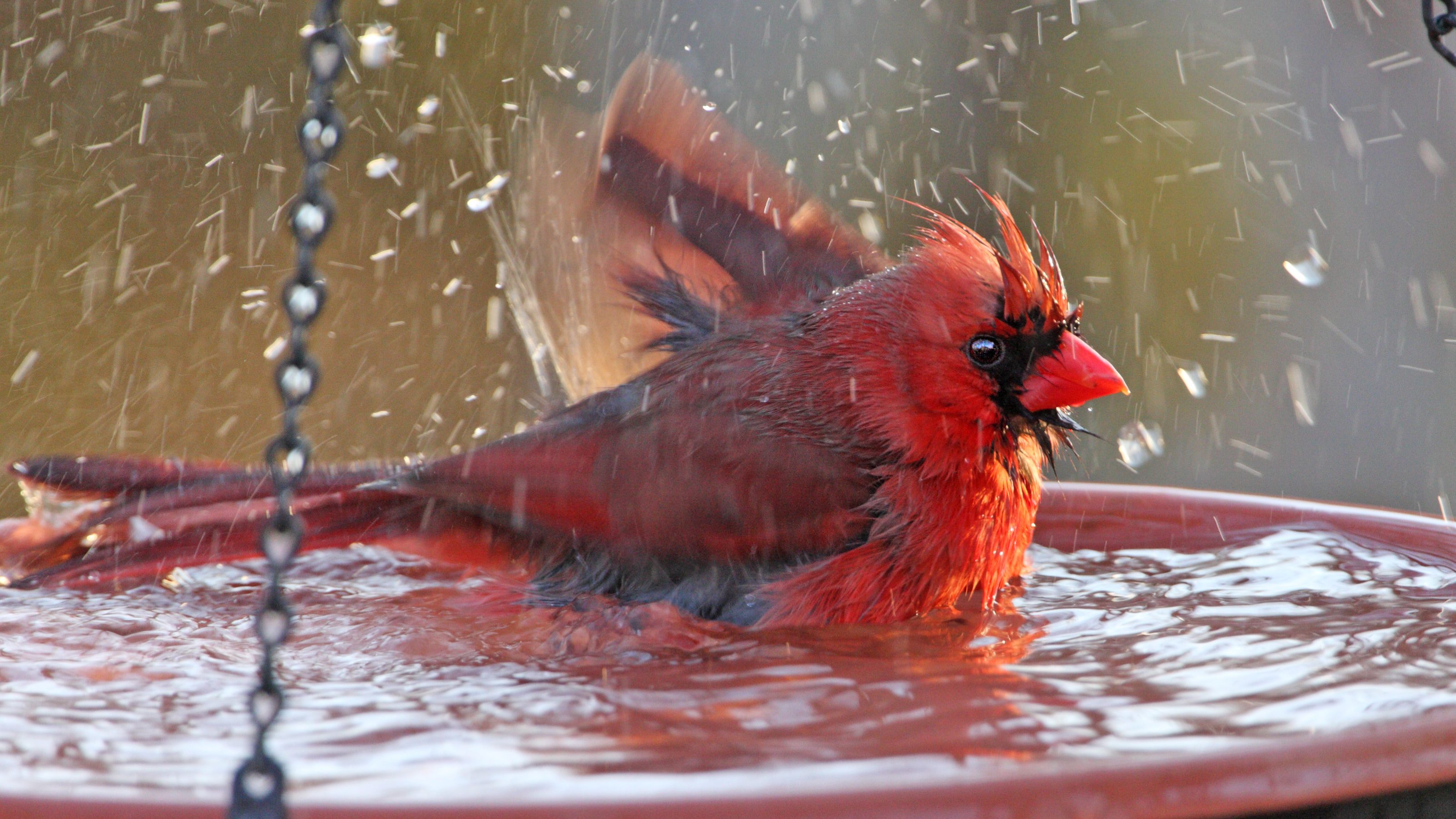
A cardinal at a bird bath. Photo: Flickr user ehpien under a Creative Commons license. Some might argue this one: I could have included a historic game changer like the beaver or a furry neighborhood critter like the raccoon. But the male cardinal’s bright red just seems to match the July 4th festivities.
Where to See: My favorite cardinal viewing is in winter: several males on a snowy hemlock is postcard perfect. But how about seeking them in one of birding’s hotspots, like the Conservancy’s Muleshoe Ranch in Arizona or the National Butterfly Center in Texas. In both places, the cardinal shares the stage with a wide array of showy migrants and local specialties.
